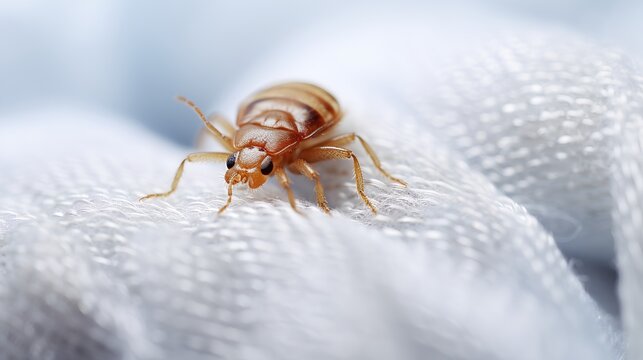Bed bugs, those tiny nocturnal pests that feed on human blood, have been a scourge to humanity for centuries. Their ability to infest homes, hotels, and other spaces undetected and their resilience to many traditional pest control methods make them a formidable adversary. However, with the right knowledge, tools, and professional assistance, it’s possible to eradicate bed bug infestations effectively. In this detailed guide, we’ll explore bed bug pest extermination, signs of infestation, methods, prevention strategies, and the importance of seeking professional help when dealing with these persistent pests.
Understanding Bed Bugs
Bed bugs, scientifically known as Cimex lectularius, are small, reddish-brown insects that belong to the Cimicidae family. Despite their name, bed bugs can be found in various locations besides beds, including furniture, clothing, luggage, and electronics. These elusive pests are nocturnal feeders, preferring to come out at night to feed on the blood of sleeping humans or animals, leaving behind itchy bite marks.
Signs of Bed Bug Infestation
Detecting a bed bug infestation early is crucial for effective extermination. Some common signs of bed bug infestation include:
Visible Bed Bugs: While bed bugs are adept at hiding in cracks, crevices, and seams, you may occasionally spot them crawling on bedding, furniture, or walls.
Bite Marks: Bed bug bites often appear as small, red welts in a clustered or linear pattern on exposed areas of the skin, such as the face, neck, arms, and legs.
Blood Stains: Bed bugs leave behind small, reddish-brown stains on bedding, mattresses, and upholstery from their excrement or crushed bodies.
Dark Spots: Bed bug faecal matter, which resembles small dark spots or smears, may be visible on bedding, mattresses, or nearby surfaces.
Musty Odor: Severe bed bug infestations can emit a distinct, musty odour described as sweet or sickly.
Extermination Methods
Heat Treatment: Heat treatment involves raising the temperature of infested areas to lethal levels (typically above 120°F) to kill bed bugs and their eggs. This effective and chemical-free method penetrates deep into cracks and crevices where bed bugs hide.
Chemical Treatments: Insecticides, such as pyrethroids or neonicotinoids, may treat infested areas, including cracks, crevices, and furniture. Following label instructions and safety guidelines when using chemical treatments and consulting a professional exterminator is essential.
Prevention Strategies
Inspect Secondhand Furniture: Thoroughly inspect secondhand furniture, clothing, and other items for signs of bed bugs before bringing them into your home.
Encase Mattresses and Box Springs: Encasing mattresses and box springs in bed bug-proof covers can help prevent bed bugs from infesting these items and make detection and treatment easier.
Reduce Clutter: Decluttering your home and minimizing hiding spots for bed bugs can make it easier to detect and pest control.
Regular Inspections: Regularly inspect bedding, furniture, and other potential hiding spots for signs of bed bugs, especially after travelling or hosting guests.
Conclusion
In conclusion, bed bug infestations can be challenging to eradicate, but with thorough inspection, targeted treatment, and proactive prevention strategies, you can reclaim your home from these persistent pests. Whether dealing with a minor infestation or a full-blown invasion, seeking professional assistance is often the most effective and efficient solution for achieving long-term bed bug control and ensuring a restful night’s sleep.

